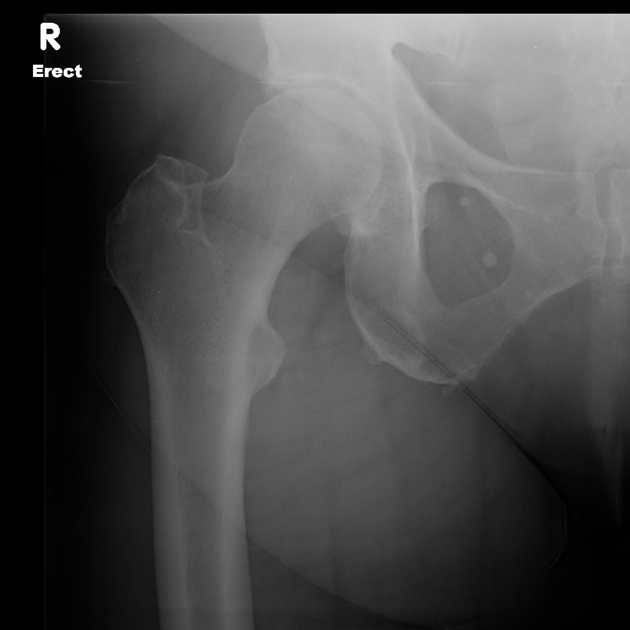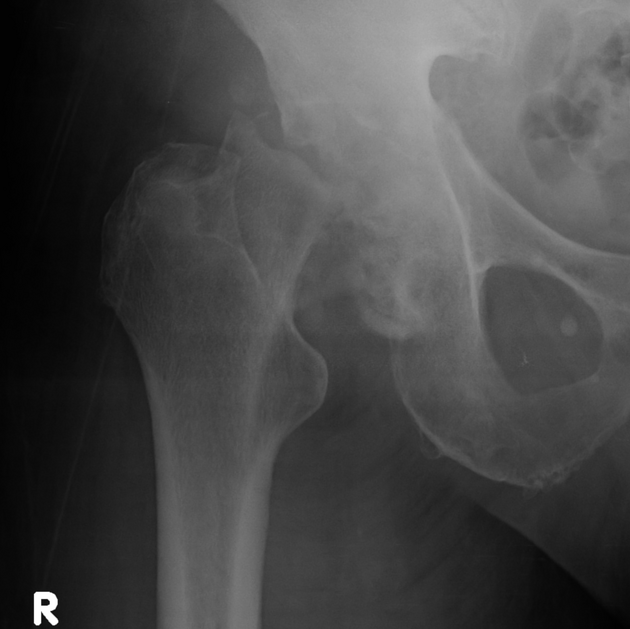Rapidly destructive osteoarthritis of the hip, also known as rapidly progressive osteoarthritis of the hip, is a rare chondrolysis of unknown etiology which can progress to complete destruction of the femoral head. It is a diagnosis of exclusion.
On this page:
Epidemiology
It is most common in 60-70 year old females 4.
Diagnosis
Rapidly destructive osteoarthritis of the hip has been defined as >2 mm/year joint space narrowing or >50% joint space loss in 1 year with no evidence of an underlying cause 1,4.
Clinical presentation
Hip pain is the most frequently encountered symptom. In most cases, hip pain is present on average for ~1.5 years (range 6-36 months) 2.
Pathology
The etiology and pathophysiology is unclear 4.
Associations
Radiographic features
Plain radiograph
Initial x-rays may be normal or show mild osteoarthritis with progressive rapid joint space narrowing with or without femoral head destruction 4. Flattening of the femoral head with subchondral sclerosis and geodes are common with marginal osteophytes generally absent or small 4. There may be joint subluxation 4.
MRI
Described features include:
joint effusion and synovitis 1,4
-
ill-defined bone marrow edema of the femoral head (100%) 1
frequent extension to the intertrochanteric region
also common in the acetabulum (~83%)
femoral head flattening (~90%) 1
extensive cartilage loss 4
Treatment and prognosis
The typical treatment is total hip arthroplasty ref.
Differential diagnosis
The differential diagnosis includes:
primary hip osteoarthritis 4
septic arthritis / osteomyelitis 4: in particular, tuberculosis or atypical mycobacteria ref
crystal arthropathy, e.g. CPPD, gout 4
primary lytic bone lesion ref






 Unable to process the form. Check for errors and try again.
Unable to process the form. Check for errors and try again.